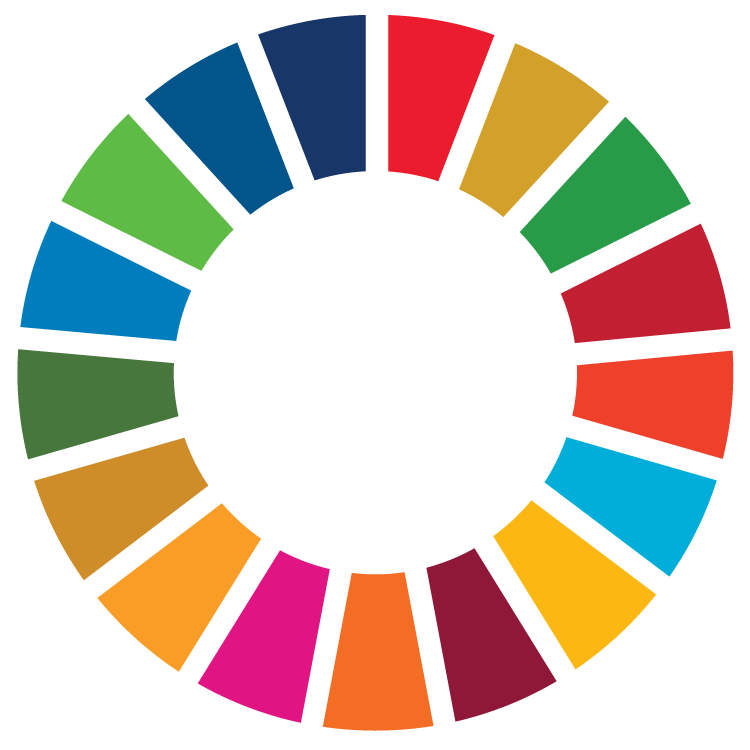
Text original
Aquesta assignatura s'imparteix en català. El text original d'aquest pla docent és en català.
Texto traducido
Esta asignatura se imparte en catalán. El plan docente en español es una traducción del catalán.
La traducción al español está actualizada y es equivalente al original.
Si lo prefieres, ¡consulta la traducción!
Text created with automatic translation
The language of instruction of this subject is Catalan. The course guide in English is an automatic translation of the version in Catalan.
Automatic translation may contain errors and gaps. Refer to it as non-binding orientation only!
Course
Early Childhood Education
Subject
Teaching Art I
Type
Compulsory (CO)
Academic year
1
Credits
3.0
Semester
2nd
| Group | Language of instruction | Teachers |
|---|---|---|
| G11, classroom instruction, mornings | Catalan | Montserrat Rierola de Mas |
| Judit Faura González |
Sustainable Development Goals (SDG)

- 4. Quality education
- 5. Gender equality
Objectives
This subject is an introduction to artistic teaching: to the materials, tools and procedures of the visual arts, and to the theoretical foundations of artistic education. Its theoretical-practical approach aims to provide students with knowledge, strategies and resources to work with visual language in early childhood education classrooms.
The objectives are:
- Understand the relationship between school and university. See artistic education as a transversal and inclusive practice.
- To make known the basic and strategic theoretical codes and procedures that allow future teachers to incorporate artistic expression into the teaching-learning process in the early childhood education stage.
- Work through a project, choosing a specific theme and making proposals through visual language, to develop meaningful learning for P5 children in a school.
Learning outcomes
- Shows sensitivity to expression in different visual languages. (RA1)
- Correctly apply the different plastic techniques. (RA2)
- Use different plastic resources to apply them in the classroom. (RA3)
- Communicates clearly knowledge, methodologies, ideas, problems and solutions in the field of early childhood education. (RA8, RA9)
- Assumes different responsibilities in individual and collective work and evaluates the results obtained. (R11)
Competencies
General skills
- Establish systemic connections between fields of knowledge.
Specific skills
- Acquire basic notions of the construction of knowledge in order to integrate them into educational activities that promote meaningful learning processes.
- Design and plan learning environments and sequences that enable development of the curriculum through adaptation of materials and promotion of play.
- Develop processes for assessment of learning, individually and in groups, through techniques and strategies of teaching observation and documentation.
- Identify and understand the key elements and the general characteristics of child development for educational interventions that address the special needs of this stage.
- Integrate and promote overall practices based on the principles of educational psychology, methodology and education and on a positive relationship with adults and peers in a way that is consistent with theories of learning at this stage.
Basic skills
- Students can apply their knowledge to their work or vocation in a professional manner and have competencies typically demonstrated through drafting and defending arguments and solving problems in their field of study.
Core skills
- Be a critical thinker before knowledge in all its dimensions. Show intellectual, cultural and scientific curiosity and a commitment to professional rigor and quality.
Content
Unit 1. Theoretical framework
- Introduction to the topic with the theoretical framework
- Artistic experiences at school
- Proposals for the teaching of visual language
- Plastic development of the child in P5
Unit 2. School-University Project (EU)
- Art as research: project work in school
- Searching for information on the project topic
- Suggestions to develop with children
- Classroom and material organization
- The role of participating agents
- The process of developing proposals with P5 children
- Documenting the process: observing, analyzing, reflecting
- The evaluation of the project process
Unit 3
- Visit to an art exhibition
Evaluation
The evaluation is continuous and consists of:
Process evaluation
- Task 1 (30%): Group work. Didactic and artistic material for the story.
- Task 2 (30%): individual work on the proposals made in the subject of Artistic Didactics I
Evaluation of results
- Task 3 (40%): School-University project
The final grade for the subject is the result of the grades corresponding to the process evaluation and the results evaluation.
To pass the subject, all assignments must be submitted.
In the event of failing the subject, the proposal specified in the review can be submitted on the day of retake.
Methodology
The class sessions They are dedicated to presenting the subject's content.
In the sessions of directed work Students work in small groups and individually. In these sessions, students must develop or apply the contents of the subject through a series of activities that are proposed at the beginning of the course in accordance with the work plan.
As directed work Outside of class hours, the student must do the exercises and research with the proposals established in the work plan.
The tutoring sessions They are individual and in small groups. They are intended to monitor the learning process of each student.
The work plan It is presented to the student at the beginning of the course. Work is done by topic and active participation is always encouraged.
Bibliography
Key references
- Belver, M., Acaso, M., & Merodio, I. (2005). Arte infantil y cultura visual. Eneida.
- Escuelas Infantiles de Reggio Emilia (1995). La inteligencia se construye usándola. Ministerio de Educación y Ciencia : Morata, cop.
- Gardner, H. (2011). Educación artística y desarrollo humano. Paidós.
- Vecchi, V. (2013). Arte y creatividad en Reggio Emilia: El papel de los talleres y sus posibilidades en educación infantil. Morata.
- Vela, P., & Herrán, M. (2019). Piezas sueltas: El juego infinito de crear. Litera.
Further reading
Teachers will provide complementary bibliography and compulsory reading throughout the course via the Virtual Campus.